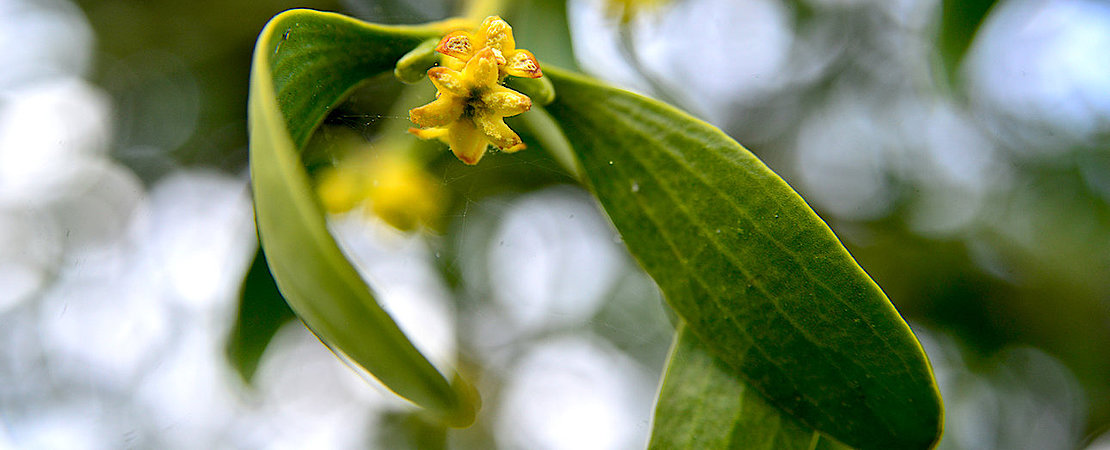Information for doctors
On these pages we have compiled some information which is important for doctor's working with mistletoe. How to start mistletoe therapy and adapt it to the course of the patient's disease, as well as further advice on its application can be found on the website anthromedics.de.
All information regarding the use of mistletoe therapy in various tumour entities can be found in the section Clinical Studies and Case Reports.
Approval, indication, prescription, reimbursement Use of mistletoe therapy in oncology
Last update: September 27th, 2022/AT
Approval, indication, prescription, reimbursement
In Germany, the subcutaneous application of mistletoeextracts is approved for adults. In accordance with the anthroposophic therapeutic concept and on the basis of the manufacturers' respective summary of product characteristics (SmPC), anthroposophic mistletoe therapy provides oncological patients with a "stimulation of formative and integrative forces to dissolve and reintegrate autonomous growth processes, e.g. in malignant tumour diseases, also with accompanying disorders of the haematopoietic organs; in benign tumour diseases; in defined precancerous lesions and for the prevention of recurrence after surgery" [1, 2, 3, 4]. This includes the application in all solid tumour entities and in all stages of disease.
The mistletoe preparations AbnobaVISCUM®, Helixor®, Iscador® and Iscucin® being produced according to anthroposophic principles are the most frequently prescribed preparations representing total plant extracts.
In Germany all four mistletoe preparations mentioned above are approved for use. Here the statutory health insurance reimburses the costs of mistletoe therapy with these drugs for all advanced, i.e. palliative, stages of disease on the condition of a prescription by a medical doctor. Precondition is a public health insurance prescription (Kassenrezept). The term palliative tumour therapy refers to the treatment of a disease which is not yet final, but which can no longer be treated curatively. The aim of this therapy is to alleviate the symptoms, improve quality of life and, if possible, to extend survival time [5].
In an adjuvant, i.e. non-metastatic stage of cancer, statutory and private insurance companies have the option to cover the costs, but aren’t required to do so. In exceptional cases, e. g. to reduce chemotherapy-related side effects during or after therapy or to alleviate cancer- or therapy-related fatigue syndrome, mistletoe preparations can also be prescribed and reimbursed by German statutory health insurance.
In Switzerland, Helixor and Iscador are approved. The costs for the mistletoe preparations, which are only available on prescription there, are covered by basic insurance if they are prescribed by a doctor.
In Austria, too, the mistletoe preparations Helixor and Iscador, which are also available on prescription there, are approved. In addition, another mistletoe preparation, Isorel has a so-called upright approval in Austria. The preparation should be available there again in the future.
For questions regarding approvals of mistletoe preparations in other countries, please contact the respective manufacturer directly.
Last update:February 27th 2023/ AT1
Use of mistletoe therapy in oncology
Anthroposophic mistletoe therapy is widely used. Preparations of white-berry European mistletoe (Viscum album L.) are among the most frequently used medicines for cancer [6, 7]. Up to 80 percent of these patients use complementary therapies [8, 9, 10, 11, 12] and up to 62 percent explicitly use mistletoe therapy [13, 14, 15, 16, 17, 18, 19].
The physician's recommendation plays an important role in the prevalence of use, since patients' need for information in this area as well as for complementary therapies is high [20].
Depending on prescription, the mistletoe preparation is injected subcutaneously several times a week. The optimal frequency of application, strength and dose are determined by the physician, taking into account the possible reactions to the mistletoe preparation and contraindications. Dosage, frequency and duration of use depend on the condition of the person to be treated, their reaction, the clinical course of the disease and the respective mistletoe preparation. The dose is monitored by a physician, usually increased slowly, and is based on the individual's general condition, the strength of the reaction and body temperature. The mistletoe preparation is usually applied at various locations, e.g. alternately to the four quadrants of the abdominal skin, the thigh or upper arm. Inflamed or irradiated application sites should always be avoided. The time of day when the mistletoe preparation is administered can be determined individually.
The duration of use is principally not limited and should be discussed between doctor and patient. It depends on the respective risk of recurrence and the individual condition and diagnostic findings of the patient. The preparation is usually applied for a longer period of time, whereby the mistletoe preparation can be given continuously or intermittently. Generally, pauses are taken with increasing duration of therapy [1, 2, 3, 4].
Mistletoe treatment can be continued without any problems during holidays or travel. The injection ampoules can be carried in small cool packs in the hand luggage. For this purpose, a certificate from the attending physician on the ongoing therapy is required in order to be allowed to take the ampoules as additional liquids in hand luggage. At the destination they should be stored in the refrigerator at 2-8 °C (35-46 °F).
High-dosage or off-label use of mistletoe applications (e.g. intravenous, intrapleural, intravascular, intrapericardial, intratumoural and intraperitoneal mistletoe applications) in addition to usual subcutaneous injections should be reserved for specialists and should be carried out under close clinical observation [22]. These applications are outside the use approved by the drug regulatory authorities. This requires the patient’s written consent. However, these off-label ways of administering are generally considered to be safe (please also read the section on safety).
Further information on the use of mistletoe preparations can be found at anthromedics.
Last update: February 27th, 2023/AT1
